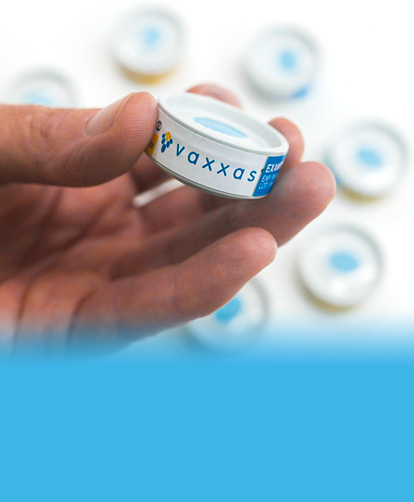Get a jab without the jab
May 17, 2022
ROBERT BOOY & GARY GROHMANN
The Telegraph, page 25
Australia leads the way in vaccination research – including ways we actually administer vaccinations.
Australia’s population might be considered small compared to other developed nations, but we are playing a substantial role in global efforts against the pandemic.
Particularly in the area of developing better vaccines.
Australian innovation in Covid-19 detection and vaccine development has grown markedly in just over two years.
In March, for example, two new Covid-19 vaccine candidates developed by Melbourne researchers at the Doherty Institute and Monash University were announced to be entering human clinical trials.
One is a protein vaccine and the other is an mRNA vaccine, and both are aimed at the critical receptor binding domain (RBD) of the SARS-CoV-2 virus causing Covid-19.
Importantly, enthusiastic support from state and federal governments has bolstered both our medical innovation and our sovereign manufacturing capability.
In addition, that support has enabled the brilliant minds we have on our shores to develop new technologies to support a faster, and broader, vaccination rollout.
Such innovative work is likely to save lives, improve public health and minimise economic impacts.
But there’s another important element to the picture.
The traditional needle and syringe format used for vaccine administration is more than 150 years old.
Bringing new innovation to the fore, vaccine technology has been progressing in Australia (and also the US) for many years.
Companies such as Brisbane-based firm Vaxxas have been investigating a new vaccination delivery method called microarray patches – MAPs for short – providing an alternative and eliminating the need to use a traditional needle and syringe.
MAPs are small, needle-free patches encompassing thousands of projections that can be accurately coated with a vaccine.
An MAP is easy to apply by simply pressing it against the skin for a short period, delivering a vaccine under the skin surface where abundant amounts of immune cells are found.
It feels like a flick to the forearm.
For the needle phobic out there, this could be a real breakthrough, but a new world-first study is suggesting that the ease and rapidity of administration and distribution offered by MAP technology has much more significant implications.
MAP technology represents an opportunity for Australia to make a sizeable global impact on future pandemics, especially on duration, hospitalisations, mortality rates and economic loss.
Modelling reported in a new white paper from world-leading healthcare strategy firm Avalere shows that the use of MAP technology in a SARS-CoV-2-like (Covid-19) pandemic situation could be a significant game-changer.
In the US alone, Avalere found that the deployment of MAP technology in the early stages of the Covid-19 pandemic could have resulted in 16.3 million (35 per cent) fewer cases and 200,000 (30 per cent) fewer deaths, while the pandemic duration could have been reduced by 150 days – all resulting in a $US500bn ($726bn) reduction in economic damage.
On a global scale, it could have resulted in global savings to the economy of up to $2.3 trillion, according to Avalere.
These predictions are from modelling based on the potential benefits of MAP technology found in early clinical trials (of several vaccines) in partnership with organisations such as the World Health Organisation, The Bill and Melinda Gates Foundation, Merck, and BARDA (an arm of the US government responsible for pandemic preparedness).
Potential benefits include lower-cost distribution, easy administration and accelerated manufacture.
Crucially, there is no need for cold-chain storage.
These benefits in turn can overcome inefficiencies, logistic difficulties, and delays associated with traditional needle and syringe vaccination.
These benefits add tremendous value because rapidity in controlling pandemic outbreaks leads to considerable savings in lives and livelihoods.
It may also dramatically relieve pressure from our healthcare system and have a positive impact on community mental and general health.
This report, from Avalere, used two plausible scenarios to show for the first time how a homegrown Australian technology could have a major impact on a global pandemic situation.
Early studies have assessed the use of MAP technology for several diseases including influenza, measles and rubella.
As well, the technology is already being applied to the current Covid-19 pandemic, with a new clinical trial set to launch in Adelaide.
The role of MAP technology has, critically, already been acknowledged by the US government in its $65.3bn plan to overhaul its pandemic preparedness and capabilities to respond to future disease outbreaks.
Within its plan, the US has prioritised the simplification of vaccine distribution and vaccine administration, by eliminating the need for cold storage and replacing needle and syringe injections with skin patches.
We must do the same; the elimination of costs involved for needle/syringe systems and the ease of using patches must be part of our next pandemic plan.
These are priorities that our Australian-grown MAP technology will meet and we will be able construct the means to control more rapidly the current and the next pandemic through the use of MAPs.
Professor Robert Booy is an infectious diseases expert and vaccine epidemiologist on the Immunisation Coalition board and an Honorary Professor at the University of Sydney Dr Gary Grohmann is a consulting virologist, a director of the Immunisation Coalition and an Adjunct Professor at the University of Sydney.




